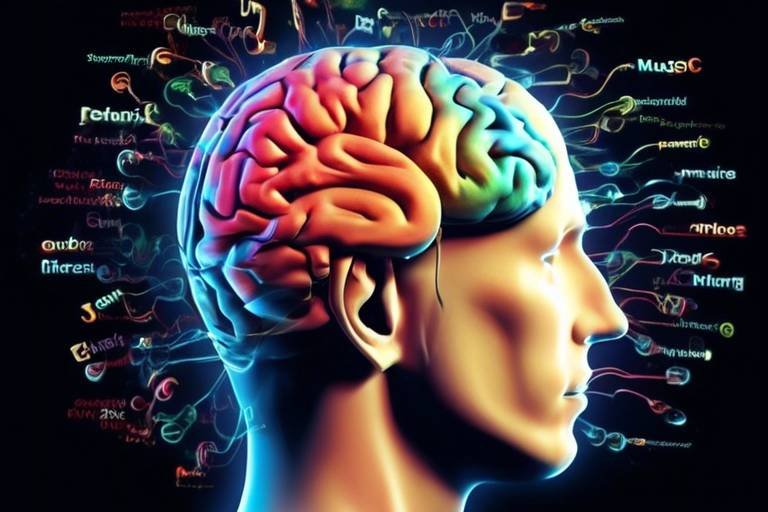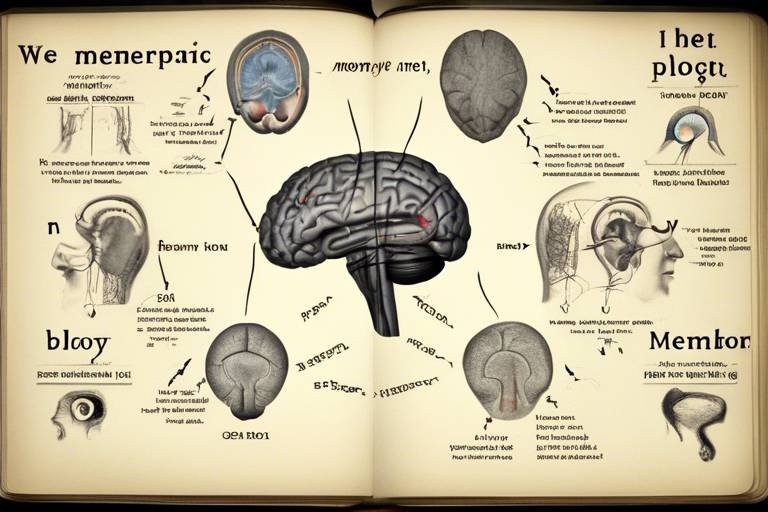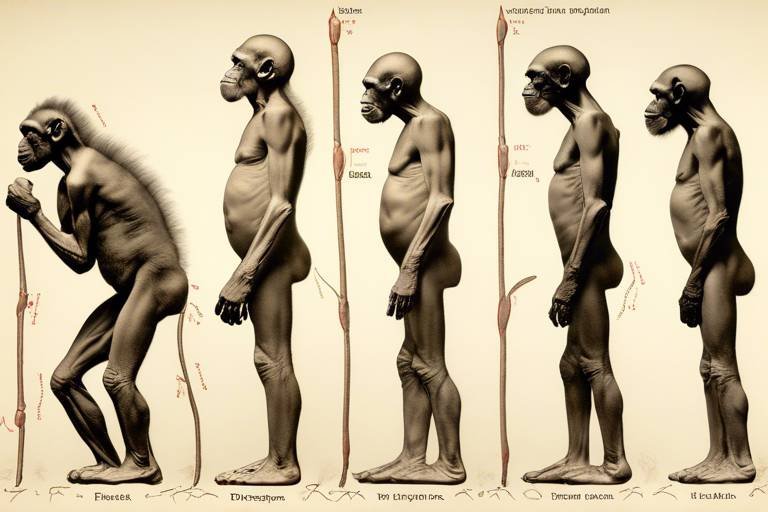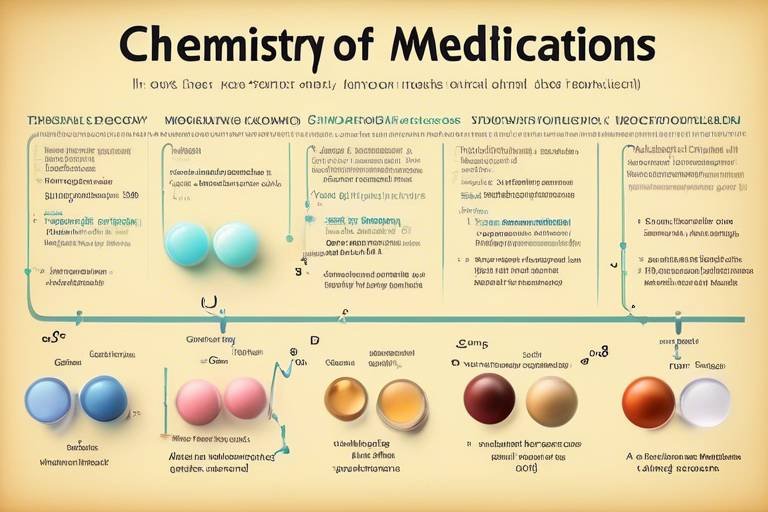How Urban Design Affects Our Daily Lives - The Science
Have you ever stopped to think about how the streets you walk on, the parks you visit, and the buildings that surround you shape your daily experiences? The intricate relationship between urban design and our daily lives is a fascinating subject that goes beyond mere aesthetics. It delves into the very fabric of our existence, influencing our behaviors, health, and overall well-being in profound ways. Urban design is not just about creating visually appealing spaces; it’s about crafting environments that foster community, encourage healthy lifestyles, and promote economic vitality. In this article, we will explore how the layout of our cities impacts everything from our social interactions to our physical health, and why it matters more than ever in today’s fast-paced world.
Urban design is the backbone of a city's functionality and aesthetic appeal. It shapes how we navigate our surroundings, interact with one another, and experience our environment. Imagine living in a city where everything is within walking distance—where parks, shops, and schools are just a short stroll away. This kind of urban planning promotes social interaction, enhances economic development, and supports environmental sustainability. When urban design prioritizes community needs, it creates spaces that invite people to gather, play, and engage, turning neighborhoods into vibrant hubs of activity.
When we talk about urban design, one of the key aspects that often comes up is walkability. A walkable city is more than just a pleasant place to stroll; it fundamentally alters our daily routines. Think about it: a pedestrian-friendly environment encourages us to ditch our cars and explore our neighborhoods on foot. This shift not only reduces traffic congestion but also enhances community engagement. In a world where we often feel disconnected, walkable cities foster a sense of belonging and connection among residents.
So, what are the tangible benefits of prioritizing walkability in urban planning? Here are a few key advantages:
- Healthier Lifestyles: Walkable cities promote physical activity, leading to healthier residents.
- Reduced Traffic Congestion: Fewer cars on the road mean less pollution and smoother commutes.
- Stronger Social Connections: When people walk more, they interact more, building a sense of community.
Research has shown that neighborhoods designed for walking correlate with increased physical activity and lower obesity rates. Imagine waking up in a community where you can easily walk to the gym, the grocery store, or a friend’s house. It's not just about convenience; it's about creating an environment that encourages a healthier lifestyle. Studies indicate that people living in walkable neighborhoods are significantly more likely to meet recommended physical activity levels, which translates to better overall health.
But the benefits of walkable cities extend beyond health. They also have a profound impact on local economies. When urban areas are designed with pedestrians in mind, they can attract businesses and increase property values. A vibrant street filled with foot traffic is a magnet for retailers and restaurants, creating jobs and stimulating economic growth. In fact, studies have shown that walkable neighborhoods often experience a boost in property values, making them attractive investments for homeowners and developers alike.
Despite the myriad benefits, many cities face significant challenges in creating walkable environments. Urban sprawl, inadequate infrastructure, and policy barriers can hinder progress. It’s essential to address these issues head-on if we want to foster cities that prioritize walkability. For example, consider the impact of poorly designed roadways that prioritize vehicles over pedestrians. This not only discourages walking but also detracts from the overall quality of life in urban areas.
In addition to walkability, the incorporation of green spaces into urban design is vital for enhancing quality of life. Parks and natural areas serve as essential refuges amidst the concrete jungle, providing a much-needed escape for city dwellers. They contribute to mental health, biodiversity, and community cohesion. Imagine a bustling city where you can take a break in a serene park, surrounded by trees and flowers. This connection to nature is not just a luxury; it’s a necessity for our well-being.
Access to green spaces has been linked to improved mental well-being. Studies indicate that spending time in nature reduces stress, anxiety, and depression. It’s like a breath of fresh air in our hectic lives. When urban design prioritizes green areas, it creates opportunities for relaxation, recreation, and social interaction, ultimately enhancing our quality of life.
Green spaces also play a crucial role in promoting environmental sustainability. They improve urban ecosystems, enhance air quality, and contribute to climate resilience. By integrating nature into our cities, we can create healthier environments for both people and wildlife. Think of parks as the lungs of the city, filtering pollutants and providing a habitat for various species. The benefits of green spaces are clear: they are essential for a sustainable urban future.
To create effective urban designs, community engagement is key. Involving residents in the planning process ensures that the spaces created meet their needs and aspirations. Imagine a city where everyone has a voice in shaping their environment. This participatory approach not only leads to better design outcomes but also fosters a sense of ownership and pride among residents.
Participatory design involves stakeholders in decision-making, allowing communities to contribute their insights and preferences. Successful examples of community engagement can be seen in various urban planning initiatives worldwide. These processes empower residents and create designs that reflect the diverse needs of the community.
Examining real-world examples can provide valuable insights into effective urban design strategies. Cities that have successfully integrated community feedback into their urban planning often experience increased satisfaction among residents and improved quality of life. These case studies serve as inspiration for other cities striving to create inclusive and vibrant urban environments.
- What is urban design? Urban design is the process of shaping the physical features of cities, towns, and regions, focusing on the arrangement, appearance, and functionality of urban spaces.
- Why is walkability important? Walkability encourages physical activity, reduces reliance on cars, fosters social connections, and enhances community engagement.
- How do green spaces benefit urban areas? Green spaces improve mental health, enhance biodiversity, promote environmental sustainability, and provide recreational opportunities for residents.
- What role does community engagement play in urban design? Community engagement ensures that urban designs meet the needs of residents, fostering a sense of ownership and pride in local spaces.

The Importance of Urban Design
This article explores the intricate relationship between urban design and daily life, highlighting how the layout of our cities influences our behavior, health, and overall well-being.
Urban design is not just about creating aesthetically pleasing spaces; it is the backbone of a city’s functionality and livability. Imagine walking through a vibrant neighborhood filled with cafes, parks, and shops, where the streets are designed for people, not just cars. This is the magic of thoughtful urban design. It shapes our experiences, influences our interactions, and ultimately affects our quality of life.
One of the most significant roles urban design plays is in promoting social interaction. When cities are designed with public spaces like plazas, parks, and community centers, they become lively hubs where people can gather, share ideas, and build relationships. Think about it: when was the last time you struck up a conversation with a stranger while waiting for a bus in a dull, lifeless area? Probably never. A well-designed urban environment encourages these spontaneous interactions, fostering a sense of community.
Furthermore, urban design is crucial for economic development. Cities that prioritize pedestrian-friendly infrastructure often see a surge in local businesses. When people can easily walk to shops and restaurants, they are more likely to spend money, boosting the local economy. A vibrant street life filled with foot traffic can transform a neighborhood, making it an attractive destination for both residents and tourists.
Environmental sustainability is another critical aspect of urban design. Cities are responsible for a significant portion of global carbon emissions, and how they are designed can either exacerbate or alleviate this issue. By integrating green spaces, promoting public transportation, and encouraging sustainable building practices, urban design can help mitigate environmental impacts. For instance, cities that incorporate parks and green roofs can improve air quality, reduce heat islands, and enhance biodiversity.
In essence, urban design is a multifaceted discipline that intertwines social, economic, and environmental threads. It is about creating spaces that are not only functional but also inviting and sustainable. The next time you stroll through your city, take a moment to appreciate the design that surrounds you. It’s not just about the buildings; it’s about how those spaces make you feel and interact with others.
- What is urban design? Urban design is the process of shaping the physical features of cities, towns, and regions, focusing on the arrangement and design of buildings, public spaces, transport systems, and amenities.
- How does urban design affect health? Urban design impacts health by influencing physical activity levels, access to green spaces, and air quality, all of which contribute to overall well-being.
- Why is walkability important? Walkability enhances community engagement, promotes healthier lifestyles, and can lead to economic growth by attracting businesses and visitors.
- What role do green spaces play in urban design? Green spaces improve mental health, provide recreational opportunities, and contribute to environmental sustainability by enhancing biodiversity and air quality.

Walkability and Urban Mobility
When we think about our daily routines, how often do we consider the environment around us? The concept of walkability is more than just a buzzword; it’s a fundamental aspect of urban design that significantly impacts our lives. Imagine stepping out of your home and being greeted by tree-lined sidewalks, vibrant storefronts, and friendly neighbors. Sounds inviting, right? Walkable cities create a seamless blend of accessibility and community, encouraging us to leave our cars behind and explore our neighborhoods on foot.
Walkability influences our mobility by making it easier and more enjoyable to get around. In urban areas designed with pedestrians in mind, people are more likely to walk to work, school, or even the local café. This shift not only reduces our reliance on cars, which is crucial for minimizing traffic congestion and lowering carbon emissions, but it also fosters a greater sense of community. When we walk, we engage with our surroundings, meet new people, and experience the city in a way that driving simply cannot replicate.
Moreover, the benefits of walkable cities extend beyond mere convenience. They can significantly enhance our quality of life. Research has shown that neighborhoods designed for walking promote healthier lifestyles. In fact, a study conducted by the American Journal of Public Health found that residents in walkable areas are 35% more likely to meet recommended physical activity levels. This is a striking statistic that underscores the direct link between urban design and our health.
But what makes a city walkable? A combination of factors contributes to this phenomenon, including:
- Proximity to essential services like grocery stores, schools, and parks
- Safe and accessible sidewalks that encourage walking
- Mixed-use developments that combine residential, commercial, and recreational spaces
- Public transportation options that facilitate easy movement
As cities continue to grow, the need for effective urban mobility solutions becomes increasingly pressing. The challenge lies in balancing the demands of a growing population with the necessity of creating pedestrian-friendly environments. Urban sprawl, characterized by low-density developments far from essential services, often leads to a reliance on cars, which can exacerbate traffic problems and reduce walkability. Additionally, inadequate infrastructure—such as poorly maintained sidewalks and a lack of safe crossings—can deter people from walking, leaving them feeling isolated in their own neighborhoods.
In conclusion, the relationship between walkability and urban mobility is a dynamic one that shapes our daily experiences. By prioritizing pedestrian-friendly designs, we can create vibrant communities that promote health, environmental sustainability, and social interaction. It’s time to rethink how we approach urban planning and embrace the idea that our cities should be built for people, not just cars.
- What is walkability? Walkability refers to how friendly an area is to walking. It encompasses factors like pedestrian infrastructure, safety, and accessibility to amenities.
- Why is walkability important? Walkability is crucial for promoting healthier lifestyles, reducing traffic congestion, and fostering social connections within communities.
- How can cities improve walkability? Cities can enhance walkability by investing in pedestrian infrastructure, creating mixed-use developments, and ensuring safe and accessible public transportation options.

Benefits of Walkable Cities
When we think about cities, we often envision bustling streets filled with cars, honking horns, and the rush of daily life. But what if I told you that walkable cities can transform that chaotic image into a more serene and connected community? The benefits of designing cities with pedestrians in mind go far beyond just convenience; they ripple through every aspect of our lives. Imagine a place where you can stroll to your favorite café, meet friends in a vibrant park, or simply enjoy a leisurely walk without the constant worry of traffic. Sounds appealing, right?
First off, let's talk about health. Walkable cities are like a breath of fresh air for our bodies. Research has shown that when neighborhoods are designed with walking in mind, residents tend to be more active. You might be surprised to learn that people living in walkable areas are more likely to meet their daily physical activity goals. This increased activity can lead to lower obesity rates, reduced risk of chronic diseases, and overall better physical health. It’s like hitting two birds with one stone: you’re exercising while enjoying your surroundings!
But the perks don’t stop there. Walkable cities also have a positive impact on our mental well-being. Picture yourself walking through a beautifully designed urban landscape, surrounded by greenery and friendly faces. Studies suggest that access to pedestrian-friendly environments can reduce stress and anxiety levels. In fact, people who live in walkable neighborhoods often report feeling more connected to their community. This sense of belonging can lead to stronger social ties and a more supportive network of friends and neighbors.
Moreover, let’s touch on the economic advantages. Businesses thrive in walkable areas because foot traffic is a significant driver of sales. When people can easily walk to shops, restaurants, and services, they’re more likely to spend their money locally. This not only boosts local economies but also increases property values. A recent study highlighted that homes in walkable neighborhoods can sell for up to 30% more than those in car-dependent areas. Isn’t it fascinating how urban design can influence our wallets?
To sum it all up, the benefits of walkable cities are multi-faceted and profound. From promoting healthier lifestyles to fostering economic growth, the advantages are clear. It’s not just about getting from point A to point B; it’s about enhancing our quality of life, building community, and creating a sustainable future. So, the next time you step outside, consider how your surroundings influence your day-to-day experiences. Wouldn’t you prefer a stroll over a drive?
- What is a walkable city? A walkable city is designed to prioritize pedestrians, making it easy and safe for people to walk to various destinations.
- How do walkable cities benefit the environment? Walkable cities reduce reliance on cars, leading to lower greenhouse gas emissions and improved air quality.
- Are there any downsides to walkable cities? While there can be challenges, such as urban sprawl and the need for infrastructure improvements, the overall benefits typically outweigh the drawbacks.

Health Impacts of Walkability
When we talk about walkability, we’re not just discussing the ease of getting from point A to point B on foot; we’re diving into a treasure trove of health benefits that come with it. Imagine living in a neighborhood where walking is not only safe but also enjoyable. This is the reality for many who reside in walkable cities, and the impacts on their health are nothing short of remarkable. Studies consistently show that people who live in walkable areas tend to be more physically active. This increased activity can lead to a variety of health benefits, including lower rates of obesity, reduced risk of chronic diseases, and improved mental health.
But what exactly does this mean for our daily lives? Well, consider the fact that when we have access to pedestrian-friendly environments, we’re more likely to incorporate walking into our routines. Whether it’s a leisurely stroll to the local café or a brisk walk to work, these small changes add up. Moreover, the social aspect of walking cannot be overlooked; it encourages community interaction, which can lead to a stronger sense of belonging and reduced feelings of isolation.
To illustrate the health benefits, let’s take a look at some key statistics:
| Health Benefit | Impact |
|---|---|
| Increased Physical Activity | 30% more active compared to residents of car-dependent areas |
| Lower Obesity Rates | 25% lower obesity prevalence in walkable neighborhoods |
| Improved Mental Health | Reduced depression and anxiety levels linked to green spaces and walkability |
Additionally, the mental health benefits of walkable environments are profound. Access to nature and green spaces, often found in walkable neighborhoods, has been linked to reduced stress levels and improved mood. Imagine taking a stroll through a park filled with trees, flowers, and the sounds of chirping birds. It’s not just a leisurely walk; it’s a boost to your mental well-being. Studies suggest that spending time in green spaces can lower cortisol levels, which is a hormone associated with stress.
In summary, the health impacts of walkability are extensive and multifaceted. By fostering environments that promote walking, we are not just enhancing our physical health but also nurturing our mental well-being. It’s a win-win situation that benefits individuals and communities alike. So, next time you step outside, take a moment to appreciate the sidewalks, parks, and pedestrian-friendly streets that encourage you to move. Your body and mind will thank you!
- What is walkability? Walkability refers to how friendly an area is to walking, which includes factors like sidewalks, pedestrian crossings, and proximity to amenities.
- How does walkability impact health? Walkable areas promote physical activity, leading to lower obesity rates, reduced chronic disease risk, and improved mental health.
- Can walkable neighborhoods improve community ties? Yes! Walkable neighborhoods encourage social interaction and a sense of community among residents.
- What can cities do to become more walkable? Cities can invest in pedestrian infrastructure, create more green spaces, and involve residents in urban planning.

Economic Advantages
When we think about urban design, it’s easy to get lost in the aesthetics or the environmental aspects. However, one of the most compelling reasons to invest in pedestrian-friendly urban planning is the it brings. Imagine walking through a vibrant neighborhood filled with shops, cafes, and parks. Doesn’t that sound appealing? Well, it turns out that this kind of urban design doesn’t just look good; it can also significantly boost local economies.
First off, walkable areas naturally attract more foot traffic. This influx of pedestrians can lead to increased sales for local businesses. When people can easily stroll down the street, they are more likely to pop into a boutique or grab a bite to eat. A study conducted by the National Association of Realtors found that properties in walkable neighborhoods can command a premium, often fetching prices up to 30% higher than those in car-dependent areas. This price increase is a clear indicator that buyers value accessibility and community engagement.
Moreover, investing in walkable urban design can lead to job creation. As new businesses open in these vibrant areas, more employment opportunities arise. Think about it: a new café opens, and suddenly, there are jobs available for baristas, cooks, and even delivery personnel. This ripple effect can significantly reduce local unemployment rates, leading to a more prosperous community.
Additionally, walkable neighborhoods often see an increase in property values, which can have a profound impact on local governments. Higher property values lead to increased tax revenue, which can be reinvested into the community. This can fund essential services like schools, public transportation, and infrastructure improvements. It’s a win-win situation—better urban design leads to a healthier economy, which in turn enhances the quality of life for residents.
However, it’s essential to note that the economic advantages of walkable urban design extend beyond just local businesses and property values. They also promote sustainable economic growth. By reducing reliance on cars, cities can save on infrastructure costs associated with road maintenance and traffic management. Instead of spending money on extensive road networks, funds can be redirected towards enhancing public transport systems or creating more green spaces.
To illustrate these points, let’s take a look at a few cities that have successfully implemented walkable urban designs:
| City | Walkability Score | Economic Impact |
|---|---|---|
| Portland, Oregon | 70 | Increased local business revenue by 20% since 2010 |
| New York City, New York | 87 | Property values increased by 30% in walkable neighborhoods |
| San Francisco, California | 83 | Unemployment rate dropped to 3.5% in walkable areas |
These examples show that investing in walkable urban design isn't just a trend; it’s a smart economic strategy that can yield substantial returns. So, the next time you’re wandering through a lively neighborhood, take a moment to appreciate not just the beauty around you, but also the economic vitality that comes with it. After all, a well-designed city is more than just a place to live; it’s a thriving ecosystem that benefits everyone.
- What is urban design? Urban design is the process of shaping the physical setting for life in cities, towns, and other urban environments.
- How does walkability impact health? Walkable neighborhoods encourage physical activity, which can lead to improved health outcomes and reduced obesity rates.
- What are the economic benefits of walkable cities? Walkable cities attract more foot traffic, increase property values, and create jobs, leading to a stronger local economy.
- Can urban design influence community engagement? Yes! Thoughtful urban design can foster social interactions and create spaces where communities can come together.

Challenges in Urban Mobility
Despite the numerous advantages of creating walkable environments, cities around the world face significant challenges in enhancing urban mobility. One of the primary issues is urban sprawl, where cities expand outward instead of upward. This phenomenon leads to greater distances between homes, workplaces, and essential services, making it increasingly difficult for residents to walk or bike to their destinations. Imagine living in a sprawling suburb where the nearest grocery store is miles away; the reliance on cars becomes unavoidable, and the community begins to feel disconnected.
Moreover, inadequate infrastructure poses another major hurdle. Many urban areas lack the necessary sidewalks, bike lanes, and public transportation options that encourage walking and cycling. When pedestrians are forced to navigate busy roads without proper pathways, it not only discourages them from walking but also raises safety concerns. A well-designed city should cater to all forms of transportation, yet many places remain trapped in outdated designs that prioritize vehicles over people.
Policy barriers also play a crucial role in hindering urban mobility. Local governments may have regulations that unintentionally stifle the development of pedestrian-friendly spaces. For instance, zoning laws may favor large parking lots or commercial developments that do not integrate well with residential areas. This creates a cycle where communities are designed around cars rather than people, perpetuating a culture of reliance on automobiles.
In addition to these challenges, funding limitations can restrict the implementation of innovative urban mobility projects. Cities often grapple with tight budgets, making it difficult to allocate resources for improving infrastructure or enhancing public transport systems. As a result, many potential initiatives that could transform urban mobility remain unrealized.
To combat these challenges, cities need to adopt a multifaceted approach that includes:
- Investing in Infrastructure: Building more sidewalks, bike lanes, and public transport options can create a safer and more inviting environment for pedestrians.
- Revising Policies: Local governments should review and amend zoning laws to promote mixed-use developments that integrate residential, commercial, and recreational spaces.
- Community Involvement: Engaging residents in the planning process can provide valuable insights into their needs, ensuring that urban design reflects the desires of the community.
Ultimately, overcoming these challenges is crucial for fostering a more sustainable and connected urban environment. By prioritizing urban mobility, we can create cities that not only enhance our daily lives but also contribute to a healthier planet.
- What is urban mobility? Urban mobility refers to the movement of people within urban areas, encompassing various modes of transportation such as walking, cycling, public transit, and driving.
- Why is walkability important? Walkability promotes healthier lifestyles, reduces traffic congestion, and fosters social connections, making cities more vibrant and livable.
- How can cities improve urban mobility? Cities can improve urban mobility by investing in infrastructure, revising policies to favor mixed-use developments, and involving the community in planning processes.

Green Spaces in Urban Design
In today's fast-paced urban environments, the significance of green spaces cannot be overstated. These areas, which include parks, gardens, and natural reserves, serve as vital lungs for our cities, enhancing not only the aesthetic appeal but also the overall quality of life for residents. Imagine walking through a bustling city, surrounded by towering buildings, and then stumbling upon a serene park filled with greenery and vibrant flowers. This contrast is not just refreshing; it’s essential for our well-being. Green spaces foster a sense of community, provide recreational opportunities, and are crucial for mental health.
Moreover, the incorporation of green spaces in urban design contributes significantly to environmental sustainability. They help in mitigating urban heat, improving air quality, and supporting biodiversity. For instance, trees and plants absorb carbon dioxide and release oxygen, acting as natural air filters. In fact, studies have shown that urban areas with more greenery tend to have lower levels of air pollution. This leads to healthier living conditions for the inhabitants. In addition, green spaces can play a critical role in stormwater management, reducing flooding and improving water quality.
But how do these green areas impact our mental health? The answer lies in the concept of biophilia, which suggests that humans have an innate connection to nature. Access to parks and green spaces has been linked to reduced stress levels, improved mood, and increased overall happiness. A study conducted by the University of Exeter found that people living in areas with greater green space reported higher levels of well-being. This is why urban planners are increasingly prioritizing the integration of nature into city designs.
To illustrate the benefits of green spaces, let’s take a look at some key advantages:
- Enhancing Mental Health: Regular access to green spaces can lead to lower levels of anxiety and depression.
- Encouraging Physical Activity: Parks and recreational areas provide opportunities for exercise, from jogging to yoga classes.
- Fostering Social Interactions: Green spaces serve as communal hubs where people can gather, socialize, and participate in community events.
In addition to these benefits, green spaces are also crucial for biodiversity. They provide habitats for various species, helping to maintain ecological balance in urban settings. By creating environments that support wildlife, cities can foster a rich tapestry of life that benefits everyone. The challenge, however, lies in ensuring that these spaces are accessible to all residents. Urban design must prioritize inclusivity, making sure that parks and green areas are not just available but also welcoming to diverse populations.
In conclusion, the integration of green spaces in urban design is not merely an aesthetic choice; it is a fundamental aspect of creating healthy, sustainable cities. As we continue to develop urban areas, it is essential to prioritize these natural environments, ensuring that they thrive alongside our urban infrastructure. The future of our cities depends on it.
- Why are green spaces important in urban design? Green spaces improve mental health, promote physical activity, and enhance biodiversity.
- How do green spaces affect air quality? Plants and trees absorb pollutants and produce oxygen, leading to cleaner air.
- What are some examples of successful urban green spaces? Examples include Central Park in New York City and the High Line, which transformed an old railway into a green walkway.

Mental Health Benefits
Access to green spaces in urban environments is not just a luxury; it's a necessity for mental well-being. Imagine stepping outside your door and being greeted by a lush park, vibrant flowers, and the gentle rustle of leaves. It’s like a breath of fresh air for your mind! Numerous studies have shown that spending time in nature can significantly reduce stress, anxiety, and depression. In fact, a simple stroll through a park can elevate your mood and enhance feelings of happiness.
One of the key reasons green spaces have such a profound impact on mental health is their ability to provide a natural escape from the hustle and bustle of city life. When surrounded by greenery, our brains can recharge, allowing us to think more clearly and creatively. This effect is often referred to as "biophilia," the innate connection humans have with nature, which can lead to improved psychological health. But how does this translate into real-world benefits? Here’s a closer look:
- Stress Reduction: Studies indicate that individuals living near parks report lower levels of stress and anxiety. The calming effect of nature can help alleviate the pressures of daily life.
- Improved Mood: Regular exposure to green spaces has been linked to increased levels of serotonin, the "feel-good" hormone, which can combat feelings of sadness and promote overall happiness.
- Enhanced Cognitive Function: Being in nature can improve concentration and cognitive function. This is particularly beneficial for students and professionals who need to maintain focus.
- Social Interaction: Parks and green areas often serve as community hubs, encouraging social interactions that can combat loneliness and foster a sense of belonging.
Moreover, the design of these green spaces plays a crucial role in their effectiveness. Parks that are well-maintained and thoughtfully designed tend to attract more visitors, thereby maximizing their positive mental health benefits. Features such as walking paths, seating areas, and community gardens can enhance the experience, making these spaces more inviting and accessible. It’s not just about having a patch of grass; it’s about creating an environment that encourages people to engage with nature and each other.
In addition, the psychological benefits of green spaces extend beyond individual well-being. Communities with ample access to parks often report higher levels of social cohesion. Residents gather for picnics, events, and recreational activities, fostering relationships that strengthen community ties. This sense of community can be incredibly powerful, as it provides support networks that are essential for mental health. As people come together, they share experiences, which can lead to a greater understanding and empathy among neighbors.
To sum it up, the mental health benefits of incorporating green spaces into urban design cannot be overstated. They serve as vital tools for enhancing our emotional well-being, promoting social interaction, and creating healthier communities. Investing in these spaces is not just an aesthetic choice; it is a strategic approach to improving the quality of life for urban dwellers. So, the next time you step into a park, take a moment to appreciate how that simple act is nourishing not only your body but also your mind.
- How do green spaces improve mental health? Green spaces provide a calming environment that reduces stress, promotes physical activity, and encourages social interaction, all of which contribute to better mental health.
- What types of green spaces are most beneficial? Parks, community gardens, and nature trails are particularly beneficial as they offer opportunities for recreation, relaxation, and socializing.
- Can urban design influence mental health? Absolutely! Thoughtful urban design that incorporates green spaces can significantly enhance the mental well-being of residents.

Environmental Sustainability
When we think about urban design, it’s easy to focus solely on aesthetics and functionality. However, the role of urban design in promoting is equally vital. Imagine a city where green spaces are not just an afterthought, but a fundamental part of the urban landscape. These areas not only beautify our surroundings but also serve as essential ecosystems that contribute to the health of our planet.
One of the most significant impacts of incorporating green spaces into urban design is their ability to enhance air quality. Trees and plants act as natural air filters, absorbing pollutants and releasing oxygen. In fact, a well-planned urban forest can reduce air pollution by up to 30%. This is crucial in densely populated areas where air quality can significantly affect public health. Additionally, green spaces help to mitigate the urban heat island effect, where cities become significantly warmer than surrounding rural areas due to human activities.
Moreover, green spaces play a critical role in managing stormwater. Urban areas often struggle with runoff, leading to flooding and water pollution. By integrating parks, gardens, and green roofs, cities can absorb rainwater more effectively, reducing the burden on drainage systems. For instance, a study showed that urban parks can decrease runoff by up to 50%, which not only protects local waterways but also enhances the resilience of urban infrastructure against climate change.
In addition to these environmental benefits, green spaces foster biodiversity. Urban areas are often biodiversity hotspots, providing habitats for various species. By designing cities with nature in mind, we can create corridors that allow wildlife to thrive amidst urban development. This not only enriches the local ecosystem but also provides residents with opportunities to connect with nature, promoting a sense of well-being and community.
Furthermore, green spaces contribute to climate resilience. As cities face the challenges of climate change, such as increased flooding and heatwaves, incorporating nature into urban design can help mitigate these impacts. For example, cities like Copenhagen have implemented green roofs and walls to combat heat and manage rainwater, showcasing how innovative urban design can lead to sustainable solutions.
In conclusion, the integration of green spaces into urban design is not merely a luxury; it is a necessity for fostering environmental sustainability. By prioritizing nature in our cities, we can improve air quality, manage stormwater, enhance biodiversity, and build resilience against climate change. The benefits are clear, and as we move forward, it’s essential that urban planners and communities work together to create thriving, sustainable urban environments.
- What is urban design? Urban design is the process of shaping the physical setting for life in cities, towns, and regions. It involves the arrangement and design of buildings, public spaces, transport systems, and amenities.
- How does urban design affect the environment? Urban design can significantly impact environmental sustainability by integrating green spaces, improving air quality, managing stormwater, and promoting biodiversity.
- Why are green spaces important in cities? Green spaces provide numerous benefits, including improving mental health, enhancing air quality, managing stormwater, and fostering biodiversity.
- How can communities get involved in urban design? Communities can engage in participatory design processes, where they provide feedback and ideas to urban planners, ensuring that the spaces meet their needs and preferences.

Community Engagement and Urban Design
When it comes to shaping our urban environments, one thing is crystal clear: community engagement is not just a buzzword; it’s a fundamental pillar of effective urban design. Think about it—who better understands the needs and desires of a neighborhood than the people who live there? By involving residents in the planning process, cities can create spaces that truly reflect the community’s identity and cater to its unique needs. This collaborative approach fosters a sense of ownership and pride among community members, making them more likely to utilize and maintain the spaces that have been designed with their input.
Imagine walking through a park that was designed without any input from the locals. It might have beautiful landscaping, but if it lacks features that the community values—like a playground for children or quiet spaces for relaxation—it won’t serve its purpose effectively. This is where participatory design processes come in. These processes allow stakeholders—including residents, local businesses, and advocacy groups—to voice their opinions and contribute ideas, ensuring that the end result meets the community’s expectations.
Successful examples of community engagement in urban design are plentiful and can serve as inspiration for other cities. For instance, in Barcelona, the city implemented a participatory budgeting initiative that allowed residents to vote on how to allocate a portion of the city’s budget to local projects. This not only empowered the community but also resulted in the development of parks, bike lanes, and public spaces that residents genuinely wanted. Similarly, in Portland, Oregon, the city’s planning department regularly holds workshops and forums to gather input from diverse community members, ensuring that all voices are heard and considered in the urban planning process.
However, it’s important to recognize that community engagement in urban design is not without its challenges. Often, barriers to participation can arise, such as language differences, socioeconomic disparities, or simply a lack of awareness about the planning process. To combat these issues, cities must strive to create inclusive environments that facilitate participation from all community members. This might mean providing resources like translation services, hosting meetings at convenient times, or utilizing online platforms to reach a wider audience.
Incorporating community feedback into urban design doesn’t just enhance the physical environment; it also strengthens community bonds. When people feel that their opinions matter, they’re more likely to engage with their neighbors and take an active role in local affairs. This sense of connection can lead to a more vibrant, cohesive community where residents are invested in one another’s well-being.
Ultimately, the relationship between community engagement and urban design is a symbiotic one. As communities become more involved in shaping their environments, they foster a greater sense of belonging and enhance the quality of life for all residents. In a world where urban spaces are constantly evolving, prioritizing community input is not just beneficial—it’s essential.
- What is community engagement in urban design? Community engagement in urban design refers to the process of involving local residents and stakeholders in the planning and decision-making of urban spaces, ensuring their needs and preferences are considered.
- Why is community engagement important? It is important because it helps create spaces that reflect the community’s identity, fosters a sense of ownership, and encourages active participation among residents.
- How can cities improve community engagement? Cities can improve community engagement by providing accessible resources, ensuring diverse representation, and utilizing various platforms for feedback, including online surveys and public forums.
- What are some successful examples of community engagement? Examples include Barcelona’s participatory budgeting initiative and Portland’s regular workshops for community input in urban planning.

Participatory Design Processes
Participatory design processes are essential for creating urban spaces that truly reflect the needs and desires of the community. Imagine walking through a neighborhood that feels alive, vibrant, and tailored to its residents. This isn’t just a happy accident; it’s the result of involving the people who live there in the design process. By engaging community members, urban planners can gather invaluable insights that inform their decisions, ensuring that the final designs are not only functional but also resonate with the local culture and lifestyle.
At its core, participatory design is about collaboration. It invites residents, stakeholders, and local organizations to join forces with designers and planners. This collaborative spirit fosters a sense of ownership among community members, making them feel invested in the outcome. When people have a say in the spaces they inhabit, they are more likely to care for and utilize those spaces effectively. Think of it like cooking a meal; when everyone contributes their favorite ingredients, the final dish is bound to be more delicious and satisfying.
One effective way to implement participatory design is through workshops and community meetings. These gatherings provide a platform for residents to voice their ideas, concerns, and aspirations. During these sessions, planners can facilitate discussions, using tools like brainstorming exercises and visual aids to help participants express their visions. For instance, a city might host a series of workshops to gather input on a new park design, asking residents what features they’d like to see, such as playgrounds, gardens, or walking paths.
Additionally, technology plays a significant role in enhancing participatory design processes. Online platforms and social media can be powerful tools for engaging a broader audience. Surveys, interactive maps, and virtual design tools allow residents to participate from the comfort of their homes, breaking down barriers that might prevent them from attending in-person meetings. This digital approach not only expands the reach of community engagement but also allows for a more diverse range of voices to be heard.
However, it’s crucial to recognize that not all voices are equal in these discussions. Marginalized groups often face obstacles in expressing their needs and opinions. Therefore, it’s vital for planners to actively seek out these voices, ensuring that everyone has a seat at the table. By prioritizing inclusivity, urban design can better serve the entire community rather than just a select few. This commitment to equity is what distinguishes truly participatory design from tokenistic efforts.
In conclusion, participatory design processes are not just a trend; they are a fundamental aspect of effective urban planning. By fostering collaboration, utilizing technology, and prioritizing inclusivity, communities can create spaces that reflect their unique identities and aspirations. The result is a more engaged populace, thriving neighborhoods, and ultimately, cities that feel like home.
- What is participatory design? Participatory design is a collaborative approach that involves community members in the planning and design of urban spaces to ensure their needs and preferences are met.
- Why is community engagement important in urban design? Community engagement ensures that the voices of residents are heard, leading to designs that reflect the actual needs and desires of the people who use those spaces.
- How can technology enhance participatory design? Technology can facilitate broader participation through online surveys, interactive maps, and social media, allowing more people to contribute their ideas and feedback.
- What challenges does participatory design face? Challenges include ensuring equitable participation, overcoming barriers for marginalized groups, and managing differing opinions among community members.

Case Studies of Successful Urban Design
Urban design is not just about aesthetics; it’s about creating spaces that resonate with the community and foster a sense of belonging. Various cities around the world have taken innovative steps to transform their urban landscapes into vibrant, livable environments. Let’s dive into some remarkable case studies that exemplify successful urban design.
One standout example is Barcelona, Spain. The city underwent a significant transformation with its Superblocks initiative, which aims to reduce car traffic in certain neighborhoods. By limiting vehicle access and prioritizing pedestrians and cyclists, Barcelona has created more public spaces for social interaction. The result? A dramatic increase in community activities, reduced air pollution, and improved public health. Residents now enjoy cleaner streets, more parks, and a stronger sense of community.
Another inspiring case is Copenhagen, Denmark, known for its commitment to sustainability and urban mobility. The city has invested heavily in bicycle infrastructure, making it one of the most bike-friendly cities in the world. With over 390 kilometers of bike lanes, Copenhagen encourages cycling as a primary mode of transportation. This has not only reduced traffic congestion but has also promoted a healthier lifestyle among its residents. The city’s design integrates green spaces and waterways, creating a harmonious blend of nature and urban life.
Moving across the globe, we find Curitiba, Brazil, a city renowned for its innovative public transport system. The Bus Rapid Transit (BRT) system in Curitiba is a model for efficient urban mobility. It prioritizes public transport, reducing the need for personal vehicles and minimizing traffic congestion. This system has led to a more organized urban layout, promoting sustainable development and enhancing the quality of life for its residents. The city also integrates green spaces, making it a prime example of how urban design can balance transportation needs with environmental considerations.
Furthermore, let’s not overlook Melbourne, Australia, which has embraced the concept of 15-Minute City. This urban design approach ensures that all essential services—such as grocery stores, schools, and parks—are within a 15-minute walk or bike ride from residents' homes. This initiative not only reduces reliance on cars but also fosters a sense of community and encourages social interactions. Melbourne’s emphasis on mixed-use developments has led to vibrant neighborhoods where people can live, work, and play all in close proximity.
In addition to these examples, cities like Portland, Oregon, and Amsterdam have implemented successful urban design strategies that prioritize walkability, public transport, and green spaces. The key takeaway from these case studies is that urban design can significantly influence the quality of life for residents. By integrating community input, prioritizing sustainability, and focusing on mobility, cities can create environments that not only meet the needs of the present but also pave the way for a healthier, more connected future.
As we reflect on these successful urban design initiatives, it becomes evident that the path toward more livable cities lies in thoughtful planning and community engagement. These case studies serve as a beacon of hope and a guide for cities around the world striving to enhance their urban landscapes.
- What is urban design? Urban design is the process of shaping the physical setting for life in cities, towns, and regions, focusing on the arrangement and design of buildings, public spaces, transport systems, services, and amenities.
- Why is walkability important? Walkability enhances community engagement, promotes healthier lifestyles, reduces traffic congestion, and increases property values.
- How do green spaces affect urban living? Green spaces improve mental health, promote biodiversity, and contribute to environmental sustainability, making cities more enjoyable and livable.
- What role does community engagement play in urban design? Community engagement ensures that the needs and desires of residents are considered in the planning process, leading to more effective and inclusive urban spaces.
Frequently Asked Questions
- What is urban design and why is it important?
Urban design is the process of shaping the physical setting for life in cities, towns, and regions. It's crucial because it influences how we interact with our environment, promotes social connections, and enhances economic development. Good urban design creates spaces that are not only functional but also aesthetically pleasing, which can lead to a higher quality of life.
- How does walkability impact our daily lives?
Walkability refers to how friendly an area is to walking. It significantly impacts our daily routines by encouraging physical activity, reducing car dependency, and fostering community interactions. When neighborhoods are designed with walkability in mind, residents are more likely to engage with their surroundings, leading to healthier lifestyles and stronger community ties.
- What are the health benefits of living in a walkable city?
Living in a walkable city can lead to increased physical activity, which helps reduce obesity rates and improve overall health. Studies have shown that residents of walkable neighborhoods tend to exercise more, experience lower stress levels, and enjoy better mental health due to the accessibility of parks and recreational areas.
- Can walkable cities boost local economies?
Absolutely! Walkable areas tend to attract more businesses and can increase property values. When people can easily walk to shops, restaurants, and services, it encourages local spending and economic growth. Moreover, businesses in walkable neighborhoods often see higher foot traffic, which can lead to increased sales.
- What challenges do cities face in promoting walkability?
Many cities struggle with urban sprawl, inadequate infrastructure, and policy barriers that hinder the development of walkable environments. These challenges can lead to increased reliance on cars, traffic congestion, and decreased community interaction, making it essential for city planners to prioritize pedestrian-friendly designs.
- How do green spaces affect mental health?
Access to green spaces has been linked to improved mental well-being. Spending time in nature helps reduce stress, anxiety, and depression while promoting relaxation and happiness. Parks and gardens provide a peaceful escape from urban life, allowing individuals to recharge and connect with nature.
- What role do green spaces play in environmental sustainability?
Green spaces are vital for promoting environmental sustainability as they help improve air quality, support biodiversity, and mitigate the urban heat island effect. They also play a significant role in managing stormwater and enhancing climate resilience, making cities more livable and sustainable.
- Why is community engagement important in urban design?
Community engagement ensures that urban design reflects the needs and desires of residents. Involving stakeholders in the planning process leads to more effective and inclusive designs that enhance the quality of life for everyone. When communities have a say in how their spaces are developed, they are more likely to feel a sense of ownership and pride in their environment.
- Can you provide examples of successful community engagement in urban design?
There are many successful examples of community engagement in urban design, such as the participatory budgeting initiatives in cities like Porto Alegre, Brazil, where residents directly influence budget allocations for local projects. Another example is the transformation of Times Square in New York City, which involved extensive public input to create pedestrian-friendly spaces.



















